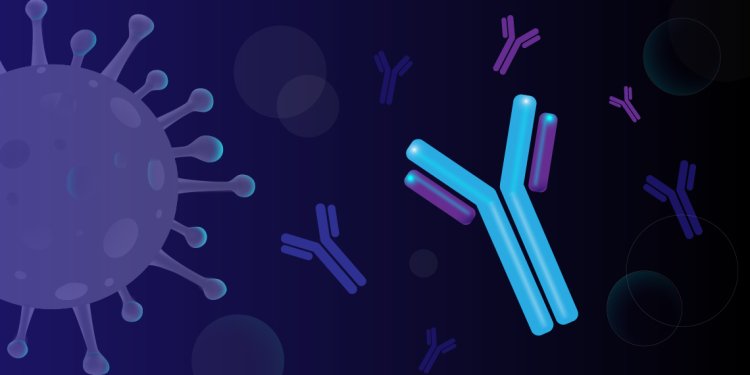Why Neutralizing Antibody Assays Are Crucial for Evaluating Viral Infections
Understand the critical role of neutralizing antibody assays in viral infection research. Learn how these assays measure immune response, assess vaccine efficacy, and guide treatment strategies. Discover how they contribute to advancements in infectious disease control.

Viral diagnosis can determine latent infection reactivation or etiology of acute viral infection. These diagnostic methods can employ two approaches: demonstrate the presence of the virus or specific antibody response. Researchers measure antibody responses using serological methods while demonstrate viral presence through the demonstration or cultivation of gene sequences or antigens.
Antiviral drugs have specific target components. However, similar to other drug products, antiviral drug products may generate unwanted immunogenicity ADA reactions. Hence, immunogenicity testing is a critical aspect of antiviral drugs. Today, scientists focus on immunogenicity assays and ADA sample analysis to ensure therapeutic development does not generate unwanted immune reactions.
Similarly, neutralizing antibodies (NAb) are critical in drug development. The current article discusses neutralizing antibodies and NAb assays in evaluating viral infections. The article begins with an understanding of neutralizing antibodies, followed by a discussion on Neutralizing Antibody Assays.
The role of neutralizing antibody assays in viral diagnostics
In serological diagnostics, the goal is to demonstrate the presence of IgM antibodies or a significant rise in IgG antibodies. The test antigen can either be an inactivated or a viable virus or some viral component prepared using molecular or virological methods. Physical separation or isotype-specific markers can establish the reacting antibody isotype. In certain situations, researchers can even determine the IgG subclass specificities. However, they have limited diagnostic value.
NAbs are antibodies that bind to a virus and prevent cell infection. A more detailed definition includes reduced viral infectivity due to binding to the surface antibody of the virion and blocking viral replication. Neutralizing antibodies generally block viral binding to receptors. In some cases, NAbs prevent conformational modifications required for viral fusion with cellular membrane or proteolytic cleavage.
Traditionally, NAbs functionality is associated with a specific section, fragment antigen-binding region. On the other hand, non-neutralizing antibodies have an effect near crystallizable regions. During viral infections, patients rarely generate broadly neutralizing antibodies. For example, broadly neutralizing antibodies are produced in HIV-1 infections. These antibodies are defined as antibodies that can neutralize strings of antigenic variable pathogens.
The generation of neutralizing antibodies is controlled by different factors. For example, persistent antigenic stimulation independent of the infection duration and viral load. Other factors may include characteristics of a pathogen, viral load, and duration of infection. Antigenic stimulation against a diversity of pathogens is another parameter influencing the generation of neutralizing antibodies.
Must Read: How Bioanalytical Services Are Transforming Drug Development and Research?
Neutralizing antibodies are often generated during acute infection and persist during a lifetime. They are primary indicators of immunity. Both IgG and IgM antibodies are present during neutralization. In NAb assays, known amounts of the target virus are mixed with serum samples. After a short incubation period, the infectivity in the residue is determined using test animals or cell cultures. This generated infectivity is compared with the infectivity of the virus, and neutralizing capacity is calculated accordingly. NAb assays are sensitive and specific. However, they can be laborious and time-consuming.
Multiple serological tests can assess the virus-antibody interaction. However, only specific assays, such as the plaque reduction neutralization test (PRNT), can measure viral neutralization during viral attachment and host cell entry. The PRNT measures antibody effects on viral infectivity. Hence, it is a gold standard for assessing neutralization capacities. In this assay format, researchers culture cells on a semi-solid media that helps fix the virus. Each virus generates a localized infection called plaque, which is visualized and counted. After initial counting, scientists can determine the reduction in viral infectivity. However, this assay format requires a biosafety level 3 laboratory as it involves working with live viruses.
Researchers can also perform virus neutralization tests using pseudotyped viral vectors, such as Sars-CoV-2. This assay does not require a biosafety level 3 laboratory but needs a specialized setup, which can be complex and time-consuming. Recombinant replication VSV (rVSV) is another approach for evaluating neutralizing antibodies. This approach does not use a live virus. Compared to pseudotypes, producing rVSVs is easier. Today, rVSVs have been used with viruses, including Mers-CoV, Sars-CoV, and Sars-CoV-2.
Another NAb assay is the Immuno-CovTM, where the VSV is changed to express the S protein. However, researchers use a dual split protein luciferase system to quantify viral neutralization. Finally, the surrogate virus neutralization test, an innovative method based on the ELISA assay principle, mimics virus-cell interaction and detects neutralizing antibodies in study samples. This assay is approved by the US FDA for diagnostic purposes.
Conclusion
Antibody production is a crucial component of an effective immune response. Some antibodies work on eliminating the viral agent, whereas antibodies such as neutralizing antibodies focus on neutralizing the virus. Most of these NAbs find the viral protein and prevent its binding with the host cell.
Today, neutralizing antibodies are used against several viral infections, such as the Ebola virus disease and respiratory syncytial virus. Currently, neutralizing monoclonal antibodies are showing promising results in neutralizing assays. However, laboratories offering advanced solutions such as bridging assays and LC-MS testing will be vital in advancing and applying these technologies in routine applications.
What's Your Reaction?
















